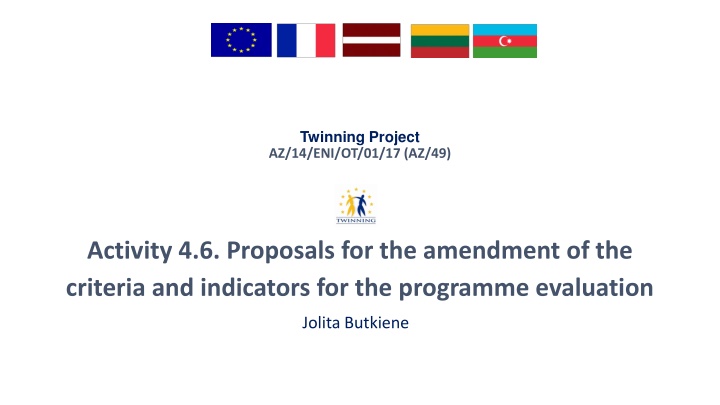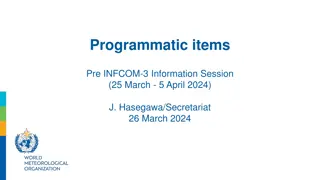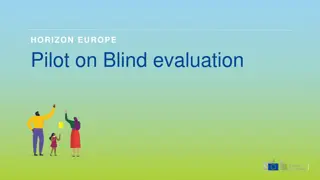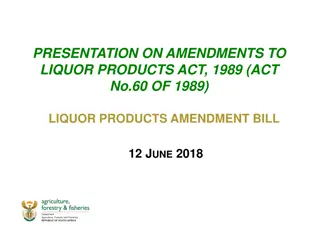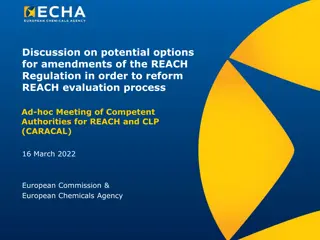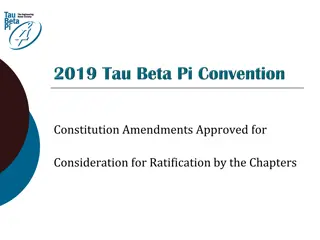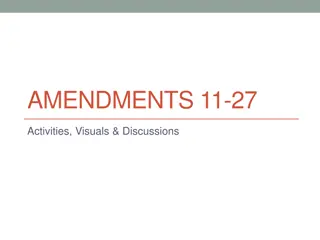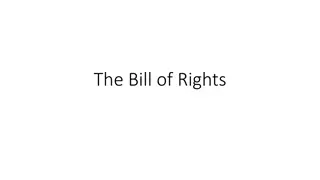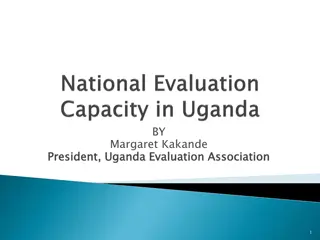Proposals for Programme Evaluation Criteria Amendments
This content discusses proposals for amending criteria and indicators for programme evaluation, focusing on a competence-based learning approach and suggestions for improving programme aims, competences, and evaluation criteria.
Download Presentation

Please find below an Image/Link to download the presentation.
The content on the website is provided AS IS for your information and personal use only. It may not be sold, licensed, or shared on other websites without obtaining consent from the author.If you encounter any issues during the download, it is possible that the publisher has removed the file from their server.
You are allowed to download the files provided on this website for personal or commercial use, subject to the condition that they are used lawfully. All files are the property of their respective owners.
The content on the website is provided AS IS for your information and personal use only. It may not be sold, licensed, or shared on other websites without obtaining consent from the author.
E N D
Presentation Transcript
Twinning Project AZ/14/ENI/OT/01/17 (AZ/49) Activity 4.6. Proposals for the amendment of the criteria and indicators for the programme evaluation Jolita Butkiene
Its my pleasure to say hello to everyone! It s my pleasure to say hello to everyone!
Student-Centred, competence based learning This approach has many implications for the design and flexibility of curriculum, course content, and interactivity of the learning process and is being increasingly used at universities across Europe. What will I teach? What students will learn? A competence-based approach is a pedagogic method centered on the learner instead on the content of the course or the study programme itself. It is an approach in which skills, knowledge and attitudes are specified in order to define, steer and help to achieve professional competence.
Update on the programme level evaluation citeria Based on the mock evaluation reports Based on the discussions with ANO The main comments on the evaluation criteria: Programme level competences are developed by the State Standard Transfer to the student- centered learning is at the initial stage Overlap and redundancy of the evaluation criteria and indicators
Suggestions to improve Suggestions to improve programme Programme aims and competences Criteria The Programme is in line with the strategic priorities of the HEI. programme evaluation criteria and indicators evaluation criteria and indicators Indicators Provide evidence how different aspects of the programme align with the strategic priorities of the HEI(e,g,Internationalization, research profile, etc.) Course/module level learning outcomes, teaching and assessment methods are formulated and reflected in course syllabuses. A mapping is done and it is clear how courses/modules learning outcomes contribute to the achievement of programme level competences Evidence that the Programme has thoroughly analysed the job market for graduates and has comprehensively incorporated the results in the learning outcomes of the courses. Evidence that the programme has thoroughly examined the educational market and used the results to demonstrate the advantages of the programme under review over other similar programmes in the market and HEI (e.g. number of electives, delivery of a programme or part of the programme in a foreign language, opportunities for international students mobility, incoming international academic staff in the programme, participation of lecturers from the professional field in a programme, etc.). The LO of the courses are well aligned with the program level competences defined by the state standard. The course/module learning outcomes are linked to professional activity areas for which the programme graduates are trained. The Programme s position in the study field among other similar programmes provided in the same and other HEI s.
Curriculum design Indicators Criteria Number of ECTS credits for mandatory, elective courses, internship and final state attestation complies with the requirements laid down in the State standard. Allocation of ECTS credits complies with the requirements of ECTS manual (2015). The curriculum design meets legal requirements. Study subjects and/or modules are spread evenly, their themes are not repetitive. The learning plan of the programme demonstrates logical arrangement of courses/modules and consistent development of competences of students. Theory and practice are systematically interrelated throughout the curriculum. The learning plan of the Programme demonstrates that theoretical discourse and practical application (e.g., laboratory work, projects or internship) complement each other in developing the students qualification profile. Innovative pedagogical methods are used (for ex., project-based learning, simulations, cases, games, use of IT technologies). Internship is appropriate for achievement of program level competences. Requirements for writing bachelor s and master s final thesis are developed and communicated to the students. Evidence that final thesis requirements comply with the field and cycle requirements. Internship has clearly defined learning and assessment methods.
Teaching Staff Criteria The number of the teaching staff is adequate to ensure achievement of learning outcomes. Indicators Percentage of teaching staff working in HEI on full time basis. Percentage of guest lecturers from the professional world whose contribution forms an integral part of the study programme s didactical concept. The program creates conditions for the professional development of the teaching staff. Academic staff management processes/procedures including recruitment, workload allocation, performance appraisal and professional development. Teaching staff turnover ensures an adequate provision of the programme. Training opportunities and councelling for a new academic staff members. The teaching staff of the programme is involved in research (art) managed and / or affiliated with the HEI and directly related to the study programme being reviewed. Data on the teaching staff turnover over the reporting period in the programme and in the course/module. Subject- based teaching staff turnover does not exceed 20%. Data on the participation of the teaching staff in scientific conferences, wokshops,exchange programmes, list of 5 best publications.
Facilities and learning resources Criteria The premises for studies are adequate both in their size and quality adequate provision of the programme. Indicators Data on the facilities used for the delivery of the programme and their capacity. Data on the equipment used for the delivery of the programme. The teaching and learning equipment (laboratory and computer equipment, consumables) are adequate both in size and quality for provision of the programme. Data on the teaching/learning materials available at the institution s library, reading rooms; access to e-publications, data bases, etc. Information on learning management system. The programme has adequate arrangements for students practice for provision of the programme. Data on the agreements with organizations/companies for student practice. Teaching materials (textbooks, books, periodical publications, databases) are adequate, up-to-date and accessible for provision of the programme. Information on the updating and upgrading of the learning resources over the reporting period. Different streams of financing of the programme is appropriate and sufficient for adequate provision of the programme. Data on library working hours. Data on the programme financing: state financed places, tuition, research, business support, alumni support, other.
Study process and students performance assessment in terms of student centeredness Criteria The organisation of the study process ensures an adequate provision of the programme and the achievement of the competenses. The assessment system of students performance is clear and adequate, and known to students in advance. Indicators Information on the course/module LO, teaching and assessment methods are disseminated and discussed with students. Assessment criteria for students performance assessment are in place, are known by students in advance and are applied fairly to all students. Demonstration of the appropriate range of assessment methods, e.g. individual examinations, course work, group assignments, projects, presentations to make sure module/course learning outcomes are achieved. Students are given a regular feedback on their performance.
Programme management and quality assurance Criteria Internal QA system ensures the effective implementation of the program. Indicators Programme management and decision-taking procedures are defined and documented(e.g., there is a council in charge to define the long-term orientation of the sudy program and to organize internal evaluation). Programme steering council(or any other body) includes all relevant stakeholders is in place and meets regularly. Information and data on the implementation of the programme are regularly collected and analysed. Sources of information on the quality of studies. Feedback from the teaching staff, alumni, employers and especially students on the provision of the programme (or subjects/modules). The evaluation of the program and improvement processes involve stakeholders. Data on the involvement of stakeholders in the process of programme evaluation and improvement and their impact. The outcomes of internal and external evaluations of the programme are used for the improvement of the programme. Changes in the Programme related to the results of internal and external evaluations. Ways of making programme evaluation results and improvement plans are accessible to the institution s community and social partners. The program has procedure for dealing with student complaints and appeals. The program has procedure for dealing with student complaints and appeals.
